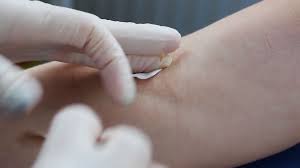
A Surgical Glue Made From Your Own Blood?
From the successful reattachment of limbs to the latest lifesaving transplants, the science of surgery continues to progress dramatically. Although recent advances in the field have involved the use of lasers and other minimally invasive techniques, many of our most miraculous procedures still require an open incision. The surgeons greatest challenge remains how to close surgical wounds in a way that will minimize air leaks and the loss of blood and other fluids.
“The conventional way to do this, the way we have always done it was to suture wounds and to use staples, says, Jesper Peterson Cardio-Thoracic Surgeon. In lung tissue especially, but in other tissue as well there are drawbacks to this, but especially in the lung tissue staples and sutures could not be completely airtight – it’s very important to have something else in addition to sutures and staples.”
To find that “something else” medical researchers looked inside – to find a way to deal with the closure of wounds much the way the body’s own natural clotting ability does. Dr. Peterson worked with a team from around the world, backed by a well-known pharmaceutical company, to create an adhesive – a surgical glue that could be made from a patient’s own blood!
“The adhesive effect in the blood can be used to basically make a sealant that can be used during surgery – in principal what is done we take the resources that the body itself uses to heal wounds in the body and use that to seal the surgical wounds that we make during a procedure, said Peterson.
A New Kind of Surgical Glue
These so-called surgical glues are not new. In fact, these fibrin sealants as they’ve become known, have been around for quite some time. They work by forming an adhesive gel-like mass that can quickly stop internal bleeding, or seal air leaks. However, until recently the only way to create them was to use pooled plasma and animal proteins for the blood and binding components. What is unique about this latest development, that is known as the Vivostat System is that it is “autologous,” which means it has been prepared from the patient’s own blood.
The new approach uses a unique preparation and application apparatus that can produce surgical sealant right in the operating room in less than 30 minutes, using a patient’s own blood.
Dr. Henrick Kjaergard, Chief of Cardio-Thoracic Surgery at the Gentofte Hospital in Denmark, was one of the first to use the system. “We can have bleeding problems in coronary by-pass grafting,” said Kjaergard, so there is the potential for use of sealants in this type of surgery – it worked very well, we were, of course, a little nervous, but we were all excited when we saw it worked so well.”
Another advantage of the new system that Kjaergard and his team discovered, was the speed at which the solution solidifies to form a strong yet flexible seal. “It nearly polymerizes in the air and that’s what surgeons really want – if you have an oozing, bleeding problem and you want to seal something – you don’t want to wait for the minutes for the sealant to polymerize or harden, – so you have a nice seal in milliseconds – we followed the patients for more than one year and there was no sign of any adverse reactions to the Vivostat Sealant”
Sometimes, our greatest medical breakthroughs are those that use science and technology to imitate the inner workings of nature’s most perfect machine – The Human Body.

Recent Comments